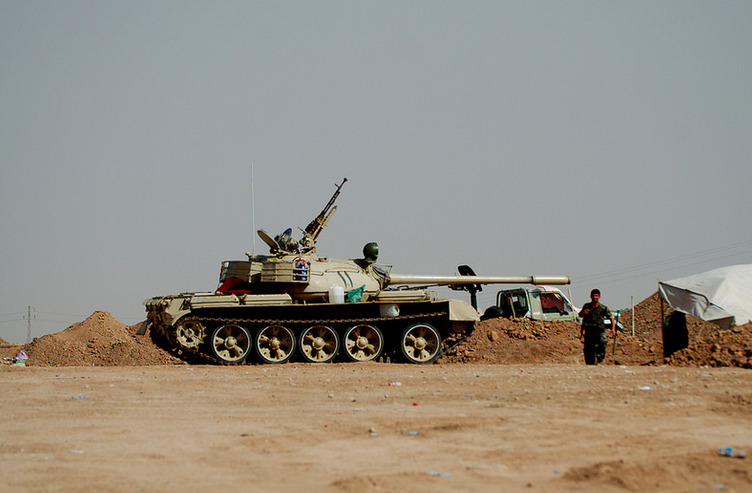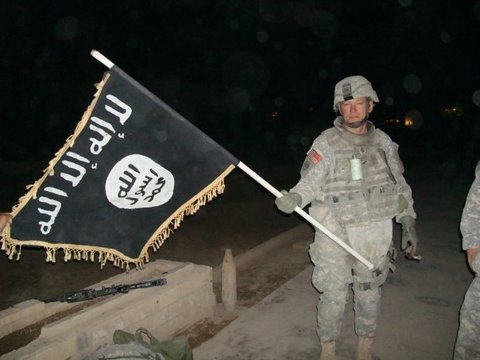
As of late January 2017, the US-backed Iraqi forces have declared Eastern Mosul liberated from the grasp of the Islamic State. Mosul has been a key stronghold of the Islamic State since its capture in 2014, providing revenue in the form of oil money and taxation of its over six hundred thousand inhabitants, as well as giving credit to the Islamic State’s claims to be the chosen successors of the Caliphate.
As Mosul’s fall to Iraqi forces seems imminent, the fate of the Islamic State seems at hand. The mosque from which Abu Bakr-Al Baghdadi made the proclamation of the establishment of his Islamic Caliphate has been in sight of Iraqi forces for weeks. Progress has been slow, but the end is in sight as Syrian, Turkish, Kurdish, and Iraqi forces press in against the Islamic State. As the IS loses cities and strongholds such as Ramadi, Sinjar, and Palmyra, it loses its credibility and reputation, making it ever more difficult for it to defend its territory. Soon it seems, the Islamic State will be forced to end its existence as a quasi-stat.
However, the end of the Islamic State as a quasi-state actor does not mean the end of its significance. Many believe that the increased pressure on the centralized mechanism of the IS (Islamic State) in Syria and Iraq will lead to a decentralization of the organization, as it loses the capability to run an international organization and reverts to multiple chapters of autonomous groups. While the capture of Mosul is important in the eventual downfall of the Islamic State, it is important for the world to adapt its strategy to counter the evolving threat it will continue to represent.
One of the capabilities which makes the Islamic State such a threat is its ability to conduct operations across the globe. By utilizing operatives who get in contact with potential radical terrorists, the IS has been able to claim credit for various terror attacks with little involvement beyond the “mentors” who instruct potential terrorists on how and where to carry out the most effective strikes. The central state has enhanced this threat by tying these operations to a uniform propaganda message. IS propaganda has led to a mass wave of recruitment, and the Islamic State successfully cultivated for itself an image as the savior of the Islamic community. While the state collapses, this uniform message is being lost. But the chapters of the Islamic State that have been established from West Africa to Malaysia will persist.
Many of these chapters were formerly independent, such as Boko Haram in West Africa and Abu Sayyaf in the Philippines. While it has been beneficial for them to be linked to the main body of the Islamic State, many of these groups had been operating for many years independently, and would have no problems continuing to do so if the IS falls. Despite the claims of the IS propaganda machine, these groups operate mostly autonomously, paying mostly lip service to the central body in the Levant. To eliminate the threat of extremist Islamic terrorism, the world must begin to address root causes, rather than simply eliminating the symptoms.

The rise of extremist terrorist groups in the Middle East can be attributed to a few fundamental factors: disillusionment with western ideas, ineffective and corrupt government, and nongovernment entities armed by regional powers to further their agendas. The idea of the nation state is originally a European invention, and since its introduction to the Middle East, conditions have generally worsened for the people living there. This feeds into extremist propaganda which poses states as a tool to separate the Islamic community to enable exploitation by Western interests. The sectarian governance of leaders like Syria’s Al-Assad or the former Iraqi Prime Minister Maliki reinforced the criticism by instituting nepotistic, decadent and corrupt governments which look out for one demographic, to the detriment of other groups. These issues might be manageable if it weren’t for the support for extremist groups delivered by both the Saudis and the Iranians to push for their dominance over the region. In Yemen, Iraq, and Syria, money and military supplies flood sectarian militias who promise to support an Iranian or Saudi agenda.
Saudi and Iranian funding for militias is part of each nation’s plan to attempt to oust the other from the region and assert hegemony as the supreme power in the region. Since the rise of the Shia Islamic Republic in Iran, Iran has supported Shia militias to replace the current governments with more Iran-friendly regimes. Saudi Arabia, as the primary Sunni power in the region, seeks to oppose this. Since 2011 and the Arab Spring, instability in the region increased significantly, and so too did opportunities for Iran and Saudi Arabia to gain power. The conflicts in Afghanistan, Bahrain, Iraq, Libya, Pakistan, Syria, and Yemen all can be classified as proxy conflicts between Saudi Arabia and Iran.
To solve these problems, the West need to incentivize Middle-Eastern governments to govern for the benefit of their own people. They can do this by giving conditional aid to governments, based on effective democratization, fair elections, representation and protection of minority groups, and fair governance. Further, to eliminate foreign aid to militant groups in the Middle East, the West needs to be tougher on regional powers who benefit from instability in the region. By instituting sanctions, suspending aid, or applying diplomatic pressure the West can exert impressive amounts of pressure for regional Central Asian powers to end their support for militant groups which create so much of the instability in the Middle East. Without the support of outside countries, many of these militias will lose their teeth, and find it significantly more difficult to undermine governments as well as conduct terrorist attacks.
If the West continues to ignore these factors, the threat of extremist terrorism in the Middle East will not subside. The sacrifices made over the past decades will be futile and in a few years, we will be dealing with new, but familiar instability once again. The world must turn its attention to the real causes of chaos in the region and work hard to find pragmatic solutions to the root causes of sectarian violence in the Middle East.
The views expressed by the author do not necessarily reflect those of the Glimpse from the Globe staff, editors or governors.






